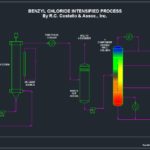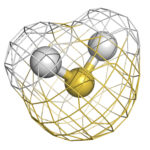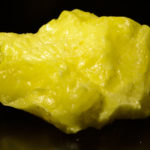Part 2 of the Holl-Reactor® In this second installment of the Holl-Reactor®, we will discuss practical applications. Liquid-Liquid Reactions Mixing two liquid reactants is very typical. This is oftentimes done in a Continuously Stirred Tank Reactor (CSTR). Depending upon the physical properties of the two liquids, reaction times can be anywhere from minutes to … [Read more...]
Building Reaction Flowsheets Utilizing Process Intensification – Part 1
In the first of this two part of the series, we will show two continuous chemical processes that utilize process intensification for chemical reaction systems and unit operations. The original processes were typically large bulky and spread out over significant plot space and also may have had high profiles. By introducing PI to these technologies a decrease in equipment … [Read more...]
Hydrogen Sulfide Removal from Refinery Gas Streams
Hydrogen Sulfide (H2S) Hydrogen Sulfide (H2S) is a colorless, flammable and extremely dangerous gas. It is found in many refinery streams such as crude oil, asphalt, residual fuel, mid distillate, gasoline and blend components. As well as natural gas, propane and LPG. It is heavier than air and can travel along the ground. Protection Against H2S Exposure In … [Read more...]
Hydrogen Sulfide Removal from Wellhead Gas
Hydrogen sulfide (H2S) is a common but dangerous compound that is often found in natural gas wells. When the concentration of H2S exceeds 5.7 milligrams/m3, the gas stream is referred to as Sour Gas. This gas must be treated before it can be used in pipelines or plants. Hydrogen sulfide is particularly dangerous, as it is toxic at low levels. The gas has a characteristic … [Read more...]
Pressure Relief Valves and Flares for the Process Industries
1 Introduction Overpressure is caused by the accumulation of material or energy within a process system that exceeds the design conditions of the equipment. Relief of this overpressure in a plant is an ASME Code requirement and is necessary for loss minimization, energy conservation, and the protection of operating personnel, the public, the environment, and other nearby … [Read more...]




